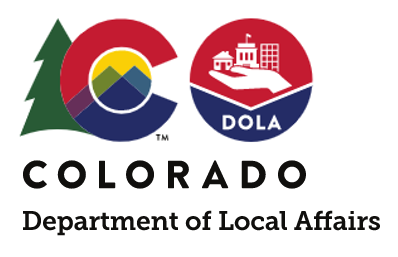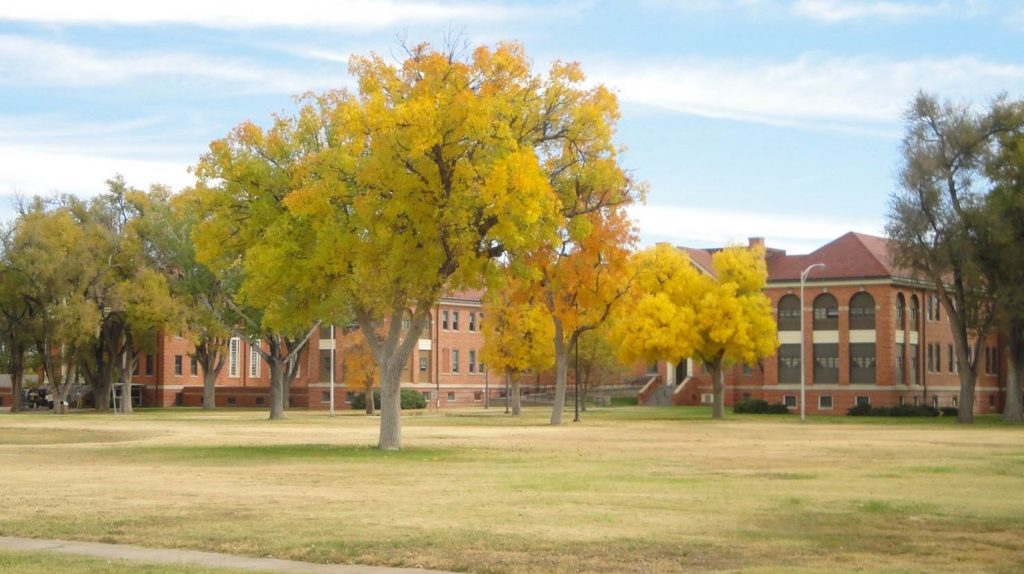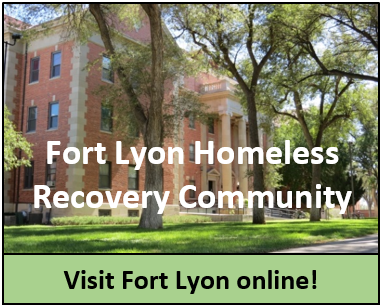INNOVATIVE IDEA:
Utilize the serenity of a rural community to recover the homeless.


The PROBLEM:
In 2012, while Reeves was serving as the Director of Colorado’s Department of Local Affairs during Governor John Hickenlooper’s first term, the state was forced to close the Fort Lyon minimum security prison which had formerly served for decades as a naval hospital. For most of the previous century this sprawling 552-acre campus along the Arkansas River in rural southeastern Colorado had helped to define the economy and culture of that region, and now it was to be decommissioned. Reeves’ department was tasked to explore opportunities for repurposing the historic Fort Lyon campus in order to continue to contribute to the economy and fabric of that fragile community.
At the same time, the economically devastating “Great Recession” of 2008-10, coupled with Colorado’s unprecedented population growth, was creating a record number of homeless individuals, many of whom also struggled with mental health challenges and drug and alcohol addictions. That homeless population included a growing number of military veterans who had previously served their country with pride and now struggled to adapt to civilian life.

The BIG IDEA:
Reeves’ team proposed that the Fort Lyon campus be repurposed to provide housing and supportive services to homeless individuals who had been dually-diagnosed with mental illness and a substance addiction, and with a priority emphasis on serving military veterans. The idea of locating such a homeless recovery program in a rural area over 200 miles from the state’s primary homeless population in Denver was absolutely unheard of; conventional wisdom had always dictated that such recovery programs should be located in the metropolitan areas where the homeless were located.
Additionally, it would be necessary to fund such a program with state resources, which had never happened before because homeless programs had always been supported by local governments within the local metropolitan communities where the homeless were located. Indeed, most homeless advocates and state policy makers thought it was a ridiculous idea.

But Reeves’ team argued that one of the inherent challenges in locating homeless recovery programs in the metropolitan areas where the homeless were located was that this was also where the homeless community’s enabling vices were located, including their local liquor store, their drug supplier and their fellow addicts. By offering a voluntary recovery alternative located far away from their enabling environment, and by exposing these broken lives to the relatively quiet serenity of a rural community, Reeves’ team suggested that chronically homeless individuals might finally have a chance to recover. The same environment of solitude that enabled Fort Lyon to help so many war veterans over the years as a naval hospital could now benefit Colorado’s homeless population in their own recovery. So, after a significant amount of pleading with state lawmakers, coupled with an untested vision of hope, the Fort Lyon Supportive Residential Community was launched in 2013 — the first-ever such experiment in homeless recovery.
The RESULT:
Today, the Fort Lyon Supportive Residential Community has served over 1,000 formerly homeless individuals from across Colorado. Of those:
- 98% have participated in vocational training, educational, employment and/or recovery-based support groups,
- 67% reported no episodes of homelessness six months after graduating from the program, and
- 47% have exited to permanent housing.
The average annual societal cost for each Fort Lyon Program participant after leaving the program decreased by 33%. This compares to a 12% decrease in annual societal costs for participants in other types of homeless recovery programs elsewhere.
Fort Lyon Program participants reported significant improvements in their levels of anxiety, depression, and overall quality of life after entering the program. In testimony before the oversight committee of the state legislature, two Fort Lyon participants shared that one of the most impactful benefits of the Fort Lyon Program to them, personally, was seeing the stars above the Arkansas Valley at night.
How much is a star worth to someone trying to recover from homelessness?


